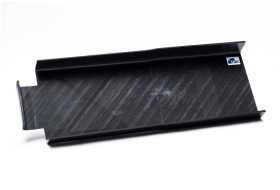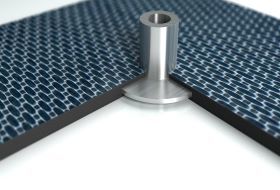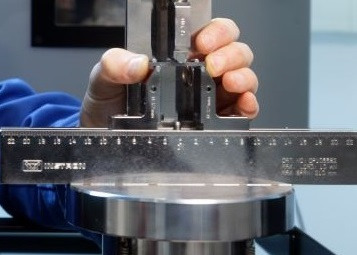Advanced forming and overmolding technology
The forming process is well suited to the automated high volume production of thermoplastic composite parts. The complexity and functionality of formed parts can be increased even further by injection overmolding, using tailored blanks or molded-in metallic inserts. Process simulation is key for a first-time-right design of molds and blank handling systems.

Tailored Blanks forming
The use of thermoplastic composite blanks with tailored lay-ups considerably increases weight savings. Producing the blanks with Advanced Fiber Placement reduces scrap and manufacturing costs. The TPRC works on:
- Optimization of productivity
- Part design
- Forming strategy based on process simulation
- Material characterization
Link: Results of the core research program on Tailored Blanks
This link provides access to an article that addresses the role of the prepreg material and lay-up process on the quality of the final component.

Injection Overmolding
Overmolding allows for complex parts with high structural performance, a high level of function integration, net shape processing and edge finishing. However, the availability of design tools for the manufacturing of overmolded parts is limited. The TPRC specializes in:
- Simulation - from virtual forming via injection molding to structural analysis
- Interface strength characterization
- Residual stress and warpage modelling
Video: Automated one-step Overmolding process
Video: research project COMPeTE
Link: Analysis of the Thermoplastic Composite Overmolding Process: Interface Strength

Integration of metallic inserts for load introduction
Multi-material joints are commonplace in modern light-weight structures. Metal inserts can be used in thermoplastic composite structures for load transfer purposes to other parts of the structure. The TPRC investigates:
- Microscale to macroscale mechanisms of hybrid joints
- In-process joining of metals to thermoplastic composite
- Surface preparation for maximum bond strength

Characterization of process-related properties
Tool design and process optimization for advanced thermoplastic composites require realistic and accurate simulation. TPRC characterizes the material behavior under processing conditions:
- Ply-ply and tool-ply friction, shear response and bending characteristics
- Fabric composites and unidirectional tapes
- Material card for virtual forming
Simulation of Thermoplastic Composite Forming webinar
In the April 2024 SAMPE webinar, the latest advancements in material characterization for forming simulations were highlighted, focusing on in-plane shear and ply-ply friction modeling. The newest ply-ply friction tester was discussed, which provides more precise and reliable data for better understanding and predicting material behavior during forming processes.






